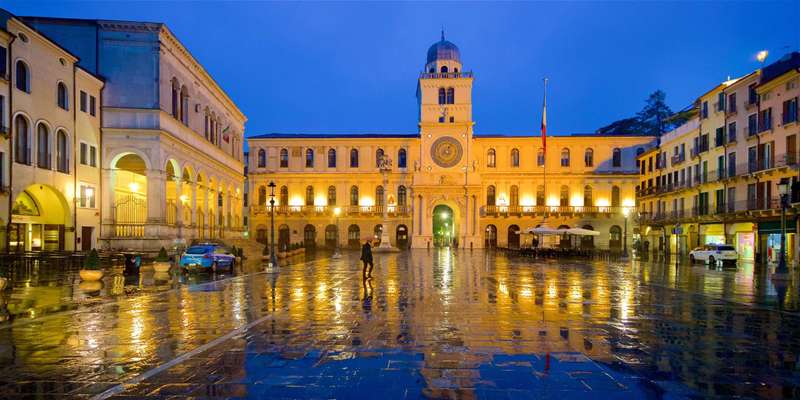- Home
- Useful Tips
- Padua's connection to...
Many travelers visit Padua for its famed university and stunning frescoes, unaware of its deep connection to William Shakespeare. This oversight means missing half the city's cultural significance—Padua features prominently in 'The Taming of the Shrew,' yet most visitors never discover these literary landmarks. Over 60% of Shakespeare-themed tours in Italy focus solely on Verona, leaving Padua's rich theatrical history unexplored. The frustration compounds when travelers later realize they walked past crucial locations without understanding their context. Unlike crowded Juliet's House in Verona, Padua offers authentic, crowd-free encounters with Shakespearean heritage—if you know where to look. The challenge lies in identifying these often-unmarked sites and interpreting their significance without relying on overt tourist infrastructure.


Decoding Shakespeare's Padua: Why the City Inspired The Taming of the Shrew
Shakespeare never visited Padua, yet he chose this university town as the setting for one of his most controversial comedies. The playwright drew from Renaissance travelogues depicting Padua as Europe's intellectual hub—a place where fiery debates (like those between Petruchio and Kate) felt plausible. Walk through Piazza delle Erbe and you'll understand why; this marketplace still buzzes with the same energy that likely inspired the play's public scenes. Local scholars note how the Basilica of Saint Anthony's mixed architecture mirrors the cultural clashes in the text. Unlike Verona's overt Shakespeare branding, Padua requires deeper reading. The best approach combines the play's text with strategic wandering—stand where Via Roma meets Via Dante to imagine Petruchio's arrival, or visit Palazzo Bo's courtyard to sense the scholarly atmosphere that fascinated Elizabethan England.
Three Unmarked Shakespearean Sites Every Literature Lover Should Find
Padua guards its Shakespeare connections discreetly. Start at Teatro Verdi, built where 16th-century inns once hosted traveling troupes performing commedia dell'arte—the crude ancestor of Shakespeare's comedy. A five-minute walk leads to Casa di Lucrezia, a preserved Renaissance home showcasing domestic life exactly as Shakespeare imagined Baptista's household. Most revealing is the University's Anatomy Theatre; its tiered wooden benches inspired the play's observation scenes, though most guides miss this connection. For DIY explorers, morning hours offer optimal lighting to appreciate architectural details mentioned in the text. Carry a marked-up script to compare descriptions with reality—the arcades along Via VIII Febbraio perfectly match scenes of characters eavesdropping. These sites require no tickets, just contextual knowledge best gleaned from university literature departments or specialized bookshops like Libreria Draghi.
Beyond the Shrew: Padua's Overlooked Shakespearean Performances
Modern Padua continues its Shakespeare legacy through unconventional venues. The Orto Botanico, a UNESCO site, hosts summer performances of 'A Midsummer Night's Dream' amid its 1545 medicinal gardens—an environment closer to Elizabethan staging than any theater. Winter brings 'Measure for Measure' adaptations in Palazzo della Ragione's cavernous hall, where acoustics enhance the play's moral debates. Local troupe Teatro delle Dieci specializes in original pronunciation performances, particularly enlightening for the Padua-set scenes. These events rarely appear on generic tourism sites; instead, check the university's cultural calendar or small posters in cafes near Piazza dei Signori. Arrive early to secure free standing-room spots, or invest in reserved seating for better views of actors utilizing historical architecture as natural scenery.
Crafting Your Shakespearean Day in Padua: A Local's Timing Strategy
To experience Padua's Shakespearean layers without rushing, begin at Caffè Pedrocchi—a 19th-century institution where scholars still debate literature over espresso. Morning light illuminates the Baptistry's frescoes, which share motifs with the play's wedding scene. Reserve afternoons for offbeat locations: the Specola Observatory's spiral staircases mirror the play's escalating deceptions, while Prato della Valle's statues include figures from Venetian plays Shakespeare knew. Evening demands strategic seating; choose left-side tables at Osteria l'Anfora to overhear students reciting Shakespeare between wine orders. For deeper immersion, time your visit with April's Shakespeare Readings in Italian and English at Palazzo Zuckermann. This rhythm balances famous landmarks with subtle literary echoes, proving Padua rewards those who connect textual clues to physical spaces.



